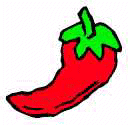|
By : Jim Pinto,  Industrial Computing - ISA, July 2001
Industrial Computing - ISA, July 2001 |
 Industrial automation is transitioning from distributed control systems (DCSs), programmable
logic controllers (PLCs), and industrial PCs to a new, connected environment of industrial appliances.
Industrial automation is transitioning from distributed control systems (DCSs), programmable
logic controllers (PLCs), and industrial PCs to a new, connected environment of industrial appliances.
Today, new technology moves too fast-the rate of change of performance increases too rapidly-to play by the old rules. So, new products and equipment must be small, cheap, reliable, flexible, expandable, and disposable. Operation must be intuitive; training quick and effective. In the future, smaller distributed factories will be built near sources of raw materials and dismantled when the sources are depleted. Operator training and updates will be via the Internet, with knowledge being disseminated through peer-to-peer (P2P) communications and file sharing. Coordination of worldwide production and process plants will be through real-time information networks, with users and suppliers as partners. Past software growth arenas were supervisory control-and-data-acquisition systems, data acquisition, and human-machine interfaces-simply emulating the functions of a DCS at a reduced price. Today, those functions integrate inexpensively in most equipment and are embedded in some. Now, software growth is in manufacturing execution systems or MES that integrates factory and business-wide functions and logistics. Tomorrow’s software will operate multi-processor systems to coordinate P2P I/O and controls. Old central-control hierarchies will give way to new self-organizing P2P networks, where intelligence resides directly in sensors and actuators. Chaos-theory-based complex adaptive systems (CAS) will yield results, robustness, and operating effectiveness never dreamed of. Several new inflection points will arrive in the next couple of decades for industrial automation. WirelessFormerly, industrial controls were all hard-wired because wireless connections were slow and expensive, and there was some mistrust of remotely operated systems that could be tampered with. Today, wireless links are fast and economical; soon bandwidth will be plentiful, to connect everything to everything. Also, advanced encryption technology makes wireless links trusted and advantageous.At the local calibration-and-troubleshooting level, the old mechanisms of plugging in will soon obsolesce as Bluetooth connections proliferate. Instrument technicians will use wireless personal digital assistants (PDAs), which, when there is insufficient capability, will link automatically to higher levels to download "advice". Micro-electromechanical systems (MEMS)MEMS will bring the analog and digital worlds closer together than ever before-through revolutionary improvements utilizing semiconductor fabrication techniques to produce miniature turbines, motors, gears, moving mirrors, and sensors.NanotechnologyProduction with old-style metal-bending, grinding, and cutting will also obsolesce as nanotechnology enables the building of products at the atomic level. The promise of more precisely machined moving parts means less wear. Materials and products will be built to order, with flawless internal structures that make them stronger and lighter. Electronics will get smaller and hence faster. As things shrink, quantum effects that reign at the atomic scale will lead to computing performance beyond today's wildest dreams.P2P information sharingChampioned by Napster (people downloading music from each other’s computers over the Internet), the P2P revolution will significantly impact future business-information exchange. Suppliers and end-users will share information as partners, eliminating several levels of infomediation and making business more frictionless.Complex adaptive systemsThe central control hierarchies will yield to new self-organizing P2P networks, where intelligence resides directly in sensors and actuators. By these new standards, today’s PLC and PC-based controls and software will seem ineffective, expensive, and even archaic. CAS provides unprecedented effectiveness and robustness-and old, deterministic control architectures will disappear.Indeed, the industrial controls business is at an inflection point. Old knowledge is widely disseminated and becomes a commodity, causing a general business decline-but growth and success will result for leaders who recognize the revolutionary advantages that new technology brings.

|
Return to Index of all JimPinto Writings

 Return to JimPinto.com HomePage
Return to JimPinto.com HomePage
If you have ideas or suggestions to improve this site, contact: webmaster@jimpinto.com
Copyright 2000 : Jim Pinto, San Diego, CA, USA
